- Home
- Jackie French
The Animal Stars Collection Page 29
The Animal Stars Collection Read online
Page 29
In those days ‘gentlemen’ and ‘ladies’ either had enough money from land ownership—not from business activities—to live without working, or were younger sons of ‘gentle’ families (gentry) who wouldn’t inherit the family estate and so took jobs in the church, bought commissions in the army, or took a high-ranking government job. Most daughters from ‘good’, but not necessarily wealthy, families sought marriage to secure their financial and social future. Poor unmarried ‘ladies’ might take a job as a governess or a companion to an elderly lady.
Isaac Manley was a gentleman, but possibly his family didn’t have enough money to buy him a commission in the army—or maybe he really longed to go to sea.
Like all boys of good family, Isaac would have learned to read and write before he joined the navy at twelve. But like all sailors he had to start right at the bottom of the naval ladder. An ordinary sailor who wasn’t a gentleman might rise to become a midshipman in those days, but he would probably never make it up to the commissioned officer level of lieutenant, partly because he wouldn’t have sufficient education to pass the necessary exams.
Scurvy
Scurvy killed more sailors than storm or shipwreck. Sailors’ gums swelled over their teeth, their teeth became loose—making it difficult to chew—and even fell out; and their legs swelled. Finally they became too weak to move, and soon died.
Captain Cook was the first British naval captain to show that scurvy could be cured by loading up with fresh vegetables at every port and making boiled essence of lemons or oranges, sauerkraut or pickled cabbage, and malt a part of the crew’s diet when the fresh produce ran out. He was given a medal by the Royal Society for having conquered scurvy; none of his crew died from it.
But the British Admiralty claimed that sailors were too conservative to eat the new foods Cook recommended—mostly because the foods were too expensive. It wasn’t until 1895 that lime or lemon juice was regularly given to British sailors.
Nowadays we know that scurvy is caused by a lack of Vitamin C.
How Cook’s Voyage Led to the Founding of the Australian Colony
Soon after the Endeavour’s return, Cook’s diaries were combined with those of Sir Joseph Banks as An Account of the voyages undertaken by order of his present majesty for making Discoveries in the Southern hemisphere, And successively performed by Commodore Byron, Captain Wallis, Captain Cartaret, And Captain Cook.
Before Cook’s account was published, Europeans thought that New Holland (Australia) was a barren place of deserts and unhappy savages—when they thought about it at all. Cook’s account of New South Wales changed the European idea of New Holland. But it didn’t make anyone want to go there. The best Cook had to say about the place was no more than that the land seemed fertile, the timber good, grass and game abundant, and that a settlement could survive there.
Even Cook expressed disappointment to a friend that he had discovered nothing new—the Great South Land that might still exist, somewhere in the Pacific, was of far more interest than the land that he had charted.
But by the 1780s—almost twenty years after the Goat’s voyage—Britain needed a base in the South Pacific. So the British Government decided to found a southern colony.
The first two spots suggested as good places for a colony—Gambia in West Africa, and Das Voltas Bay in southwest Africa—were thrown out when a surveying party said they were hot and miserable with no fresh water.
But Sir Joseph Banks (Mr Banks had been knighted by then) and James Magra, the practical joker, who’d sailed with Cook too, convinced the government that Botany Bay was the best site for a new colony. According to Banks, the Botany Bay soil was fertile, the big trees would supply perfect timber for ships or houses, there was plenty of good grass and lots of fresh water, and the inhabitants were very few and armed only with spears tipped with fish bones. They’d probably quietly move away as soon as the Europeans arrived.
Actually Banks was wrong about just about everything. But by the time the First Fleet arrived in 1788, it was too late to turn back.
The new colony that would one day become ‘Australia’ had begun.
Claiming Australia
A ceremony on a hilltop may not seem much of a way to claim half a continent—especially in the days before television, when there no independent witnesses.
But these were the days when new maps—maps that might save your life or make your fortune—were extraordinarily valuable. Cook knew that the maps that came from this voyage would firmly establish the British right to this land in the eyes of all seafaring Europeans. And they were the people his ceremony was designed to impress.
Cook also knew that Australia already had inhabitants, who probably wouldn’t want the British (or anyone else) there. Cook’s orders had told him to seek the approval of any local people, before claiming ‘new’ lands in the name of the King. It was Cook’s own decision—even if it was an unconscious one—to ignore the orders and proceed as though the land wasn’t inhabited.
Cook regarded the ‘natives’ as primitive people who could never be trading partners, and who moved about the country without ‘owning’ or farming any of it. He also believed that the country was mostly empty; the largest group he had seen contained only ten people, and he believed the country to be too desolate away from the coast for people to live there.
According to the European custom of the time, too, Cook could claim Australia because it didn’t have a King or Queen recognised by the British Crown.
In fact, by 1772, Australia had been claimed by several countries—not including the many Aboriginal nations who actually lived there. The Dutch had claimed the west, north and south coastlines, and they were the ones with the closest trading empire to Australia. The Pope had given Spain the half of the world that includes eastern Australia, when he divided the world between the Spanish and the Portuguese. The British had claimed the east coast, and in 1772 the French claimed the west coast yet again.
But none of the countries that claimed Australia had made a settlement there—the final stage in claiming a land.
The People of the Endeavour River
The people at Endeavour River were the Gogo-Yimidir. They must have found the strangers quite extraordinary—starving, many showing signs of scurvy and too weak to stand, smelly, with strange tattered clothes, quite unnecessary and uncomfortable in the heat.
Like many Aboriginal peoples, the Gogo-Yimidir shared their food resources. They showed extraordinary generosity to the shipwrecked strangers. It would had been inconceivable to them for the crew of the Endeavour not to share their catch of turtles.
But to the British the turtles were private property, a concept foreign to the Gogo-Yimidir. In years to come this lack of understanding between two totally different cultures was to have tragic consequences.
The HM Bark Endeavour
As Cook had learned to sail on colliers out of Whitby he chose a Whitby collier for his expedition. The Endeavour had been a collier named the Earl of Pembroke, hauling coal between the mine country of the north of England and the docks of east London. She was ninety-seven feet long (thirty metres) and built for endurance rather than speed or comfort.
She had a flattish bottom and a very shallow draught, so she could be beached with the tide to deliver her coal. If she hadn’t had such a flat bottom she’d never have made it through the Great Barrier Reef. She was extensively refitted before the journey and had an extra deck put in to provide more accommodation for stores and crew. This meant that much of the area where the crew lived was only four feet six inches (one metre and thirty-six centimetres) high. Many men were much shorter in those days than they are today, mostly because they and their mothers had such poor food. But it was still very, very cramped, with only eighteen inches (forty-five centimetres) between the hammocks.
The ship’s flat bottom also meant that she rolled from side to side even in calm weather—one of the reasons why Mr Banks was seasick for so much of the voyage.
Alt
hough uncomfortable, she was also extremely sturdy and seaworthy and able to sail very close in to an uncharted shoreline for the purposes of exploration and map-making.
Ship’s Bells
The ship’s bell was used to mark the passage of time. A half-hour glass was used to tell off the six four-hour watches each day. When the sand ran out, the ship’s boy, whose job it was to reverse the glass, struck a bell to show that he was attending to his business. So if he’d turned the half-hour glass eight times he struck the bell eight times. For example, in the afternoon watch:
Eight Bells at 1200 hours
One Bell at 1230 hours
Two Bells at 1300 hours
Three Bells at 1330 hours
Four Bells at 1400 hours
Five Bells at 1430 hours, and so on, until the four-hour watch was completed.
Maggots and Weevils
Sailors’ food was laid down by regulation: meat four times a week, ship’s biscuit and cheese—the foods that Isaac eats in this book. Officers and gentleman on board had better food, but Cook insisted on his ship that all fresh food be shared. The officers and gentlemen would still have brought a lot of their own food on board, including animals to be killed for meat, and even on the Endeavour, they would have eaten much better than the common sailors. In those days no one thought it was strange for sailors to die of scurvy while the officers still had plum puddings for their dinner.
But there were no fridges in those days. Food had to be dried or salted, and ships were made of wood—as wood gets wet it absorbs water. Ships were damp places; most food rotted in the damp. Only food kept in barrels of vinegar or brine—salty water—survived for the months or years a ship might be at sea.
Salt beef or pork was stored in barrels of salty water and cooked in seawater, and called ‘sea junk’ or ‘salt horse’. Sometimes the slices of meat were so salty that there was a crust of salt on them when they were served. The sailors ate so much salt that their lips and tongues became burned and blistered.
Fresh water was usually scarce, or so old it stank. It was mixed with wine or rum—watered rum was called grog—which helped to kill the bacteria, or made into ale. The sailors’ only hot drink was a mix of beer, brandy or rum, sweetened with sugar and heated with an iron rod from the galley fire.
The other main food was ship’s biscuit, or ‘hardtack’, which was made of flour, salt and lard, and beaten or rolled then slowly baked to an incredible hardness.
Sailors would tap their biscuit on the table so the weevils fell out before they ate it. If there weren’t enough weevils the biscuit might be too hard to chew, especially as many sailors had few teeth due to bad diet or scurvy. Sometimes the biscuit was rebaked on board, which not only stopped the weevils wriggling but also added extra protein!
Biscuit was also added to a salt meat stew, or made into a porridge with lumps of salt meat. English officers would take ship’s biscuit, place it in a sack, pound it with a spike for half an hour, then add pork fat, dried fruit and rum.
No ship’s stores were ever thrown away, no matter how old or bad they got, except for rotten cheese. Ship’s biscuit might be forty years old before it even came aboard!
Dates
The dates in this book may vary from other sources. What with crossing the International Date Line, naval timekeeping of the era, and the odd error in people’s diaries, it’s hard to be absolutely accurate within a couple of days.
BIBLIOGRAPHY
Possibly the most exciting way to read of Cook’s voyages is to read the day-to-day words of those who were actually there. Most of the material in this book has been taken from journals kept on board. In particular, readers might like to have a look at:
The Endeavour Journal of Sir Joseph Banks, University of Sydney Library, 1997.
Souths Seas Voyaging Accounts, National Library of Australia. Transcripts of the journals of James Cook’s first pacific Voyage, 1768–1771.
http://southseas.nla.gov.au/index_voyaging.html This web site lets you compare Cook’s journal of the voyage with the journals kept by Joseph Banks and Sydney Parkinson, as well as the official record of the voyage written by John Hawkesworth, published in London in 1773.
Williams, Glydwr, Captain Cook’s Voyages 1768–1779, The Folio Society, London, 1997.
www.captaincooksociety.com Cook’s Log, journal of the Captain Cook Society, published quarterly.
The Camel who Crossed Australia
Jackie French
Dedication
To those who demand ‘why?’ and ‘where?’ and ‘how?’; who refuse an easy boredom; who dream of worlds they can explore via everything from microscopes to spaceships; to all the Beckers, Wills, Dost Mahomets and Bell Sings still at school, who will one day roam the universe: this is for you.
Table of Contents
Title Page
Dedication
Map
Chapter 1 The Camel’s Story
Chapter 2 The Camel’s Story
Chapter 3 The Camel’s Story
Chapter 4 The Camel’s Story
Chapter 5 The Camel’s Story
Chapter 6 Dost Mahomet’s Story
Chapter 7 The Camel’s Story
Chapter 8 The Camel’s Story
Chapter 9 Dost Mahomet’s Story
Chapter 10 The Camel’s Story
Chapter 11 John King’s Story
Chapter 12 The Camel’s Story
Chapter 13 The Camel’s Story
Chapter 14 John King’s Story
Chapter 15 Dost Mahomet’s Story
Chapter 16 The Camel’s Story
Chapter 17 Dost Mahomet’s Story
Chapter 18 The Camel’s Story
Chapter 19 The Camel’s Story
Chapter 20 Dost Mahomet’s story
Chapter 21 Dost Mahomet’s story
Chapter 22 The Camel’s Story
Chapter 23 Dost Mahomet’s Story
Chapter 24 The Camel’s Story
Chapter 25 John King’s Story
Chapter 26 Dost Mahomet’s Story
Chapter 27 Dost Mahomet’s Story
Chapter 28 Dost Mahomet’s Story
Chapter 29 The Camel’s Story
Chapter 30 John King’s Story
Chapter 31 The Camel’s Story
Chapter 32 Dost Mahomet’s story
Chapter 33 The Camel’s Story
Chapter 34 John King’s Story
Chapter 35 The Camel’s Story
Chapter 36 Dost Mahomet’s Story
Chapter 37 John King’s Story
Chapter 38 The Camel’s Story
Chapter 39 Dost Mohamet’s Story
Chapter 40 The Camel’s Story
Chapter 41 John King’s Story
Chapter 42 The Camel’s Story
Chapter 43 John King’s Story
Chapter 44 The Camel’s Story
Chapter 45 Dost Mohamet’s Story
Chapter 46 John King’s Story
Chapter 47 The Camel’s Story
Chapter 48 Dost Mahomet’s Story
Chapter 49 The Camel’s Story
Chapter 50 The Camel’s Story
Chapter 51 Dost Mahomet’s Story
Chapter 52 The Camel’s Story
Chapter 53 The Camel’s Story
Chapter 54 The Camel’s Story
Chapter 55 Dost Mahomet’s Story
Chapter 56 The Camel’s Story
Chapter 57 John King’s Story
Chapter 58 John King’s Story
Chapter 59 The Camel’s Story
Chapter 60 Dost Mahomet’s Story
Chapter 61 John King’s Story
Chapter 62 The Camel’s Story
What Happened Next
Author’s Note
Acknowledgments and Thanks
Map
The journey to Australia
The journey from Melbourne to the Gulf of Carpentaria
CHAPTER 1
The Camel’s Story
Central Austr
alia, 1873
Go away.
CHAPTER 2
The Camel’s Story
Central Australia, 1873
Munch, munch, chew, chew…
You’re still here?
Phooey! Phut! You’ve got sense, even if you’re young. I like that in a camel. This is the best spot around.
There’s rain coming, too. I can smell it on the wind. This pool may be almost dry now, but in a few days there’ll be cool water. The red sand will turn green and be filled with flowers. Ah, the taste of flowers after rain! There’s no point plodding across the desert to find grass and good young leaves when you can just wait and let it come to you.
Who are you, then? A bolter? I thought so. They left you unhobbled just a bit too long at your mother’s side, and you made a break for freedom? Good for you.
Have you got a name? What did your mother call you? Once I was called Bell Sing. It’s to do with the sound of my spit as it lands, and the good groans I make as I rise to my feet. Now I’m He Who Spits Further Than the Wind.
Maybe, one day, you’ll deserve a name almost as fine as mine.
All right, you can lie down—there, where I can keep an eye on you without moving my head, and listen to your tummy rumblings. You can tell a lot about a camel by the way their tummy rumbles. And their smell, of course. Just make sure you follow my lead if anything disturbs us—dingos, giant goannas, men…
What do I know of men, you ask, out here among the stones and sand? Ha! I know all there is to know! I spit upon them! Phut!
I’ll tell you what, young camel. You lie there, and chew your cud, and learn to smell the sky. What else is there to do while we wait for the clouds to drift in from the horizon, and for the rain to come? And I will tell you how I came to understand the world of men, and how I was once part of the boldest caravan that travelled the furthest in the world…

 Christmas Lilies
Christmas Lilies The Lily in the Snow
The Lily in the Snow The Schoolmaster's Daughter
The Schoolmaster's Daughter Christmas in Paris
Christmas in Paris Lilies, Lies and Love
Lilies, Lies and Love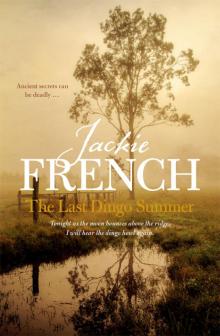 The Last Dingo Summer
The Last Dingo Summer Legends of the Lost Lilies
Legends of the Lost Lilies Just a Girl
Just a Girl Pirate Boy of Sydney Town
Pirate Boy of Sydney Town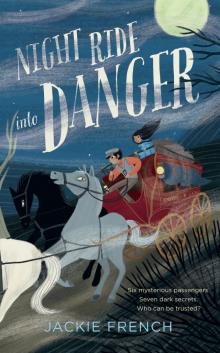 Night Ride into Danger
Night Ride into Danger The Secret of the Youngest Rebel
The Secret of the Youngest Rebel My Name is Not Peaseblossom
My Name is Not Peaseblossom Goodbye, Mr Hitler
Goodbye, Mr Hitler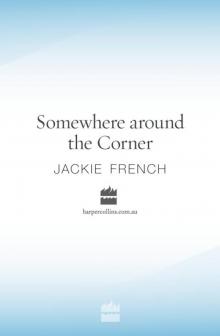 Somewhere around the Corner
Somewhere around the Corner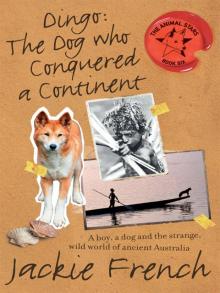 Dingo: The Dog Who Conquered a Continent
Dingo: The Dog Who Conquered a Continent Facing the Flame
Facing the Flame Dark Wind Blowing
Dark Wind Blowing Pennies For Hitler
Pennies For Hitler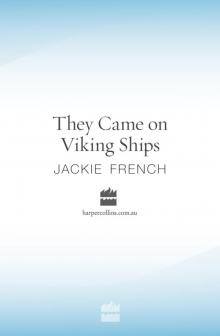 They Came On Viking Ships
They Came On Viking Ships To Love a Sunburnt Country
To Love a Sunburnt Country The Ghost of Howlers Beach
The Ghost of Howlers Beach The Girl from Snowy River
The Girl from Snowy River Phredde and the Purple Pyramid
Phredde and the Purple Pyramid The Secret of the Black Bushranger
The Secret of the Black Bushranger I Am Juliet
I Am Juliet Barney and the Secret of the French Spies
Barney and the Secret of the French Spies Miss Lily’s Lovely Ladies
Miss Lily’s Lovely Ladies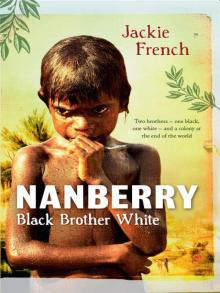 Nanberry
Nanberry A Waltz for Matilda
A Waltz for Matilda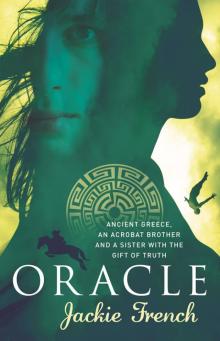 Oracle
Oracle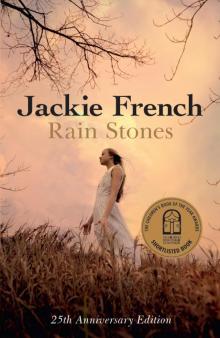 Rain Stones 25th Anniversary Edition
Rain Stones 25th Anniversary Edition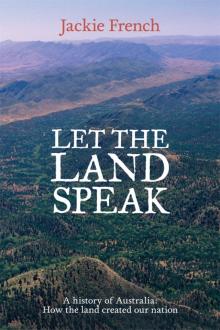 Let the Land Speak
Let the Land Speak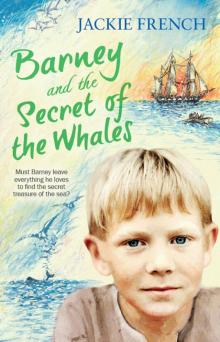 Barney and the Secret of the Whales
Barney and the Secret of the Whales The Phredde Collection
The Phredde Collection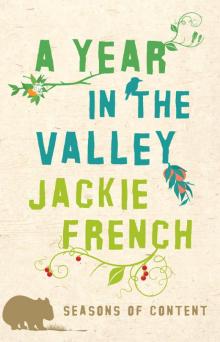 Year in the Valley
Year in the Valley A Rose for the Anzac Boys
A Rose for the Anzac Boys The Ghost by the Billabong
The Ghost by the Billabong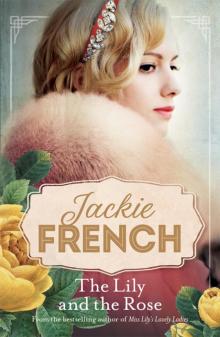 The Lily and the Rose
The Lily and the Rose Lessons for a Werewolf Warrior
Lessons for a Werewolf Warrior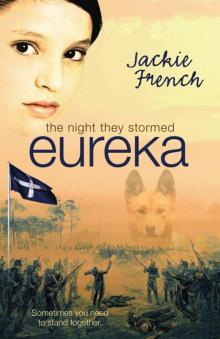 The Night They Stormed Eureka
The Night They Stormed Eureka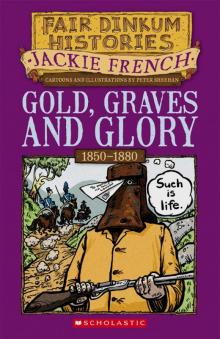 Gold graves and glory
Gold graves and glory If Blood Should Stain the Wattle
If Blood Should Stain the Wattle The Book of Horses and Unicorns
The Book of Horses and Unicorns Ophelia
Ophelia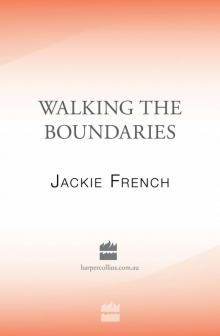 Walking the Boundaries
Walking the Boundaries Hitler's Daughter
Hitler's Daughter Missing You, Love Sara
Missing You, Love Sara Macbeth and Son
Macbeth and Son Wonderfully Wacky Families
Wonderfully Wacky Families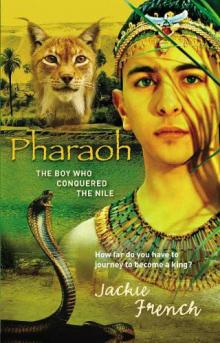 Pharaoh
Pharaoh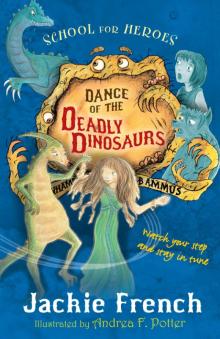 Dance of the Deadly Dinosaurs
Dance of the Deadly Dinosaurs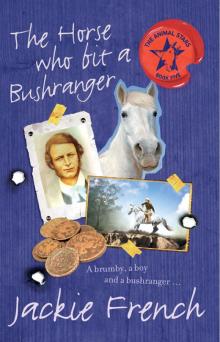 The Horse Who Bit a Bushranger
The Horse Who Bit a Bushranger One Big Wacky Family
One Big Wacky Family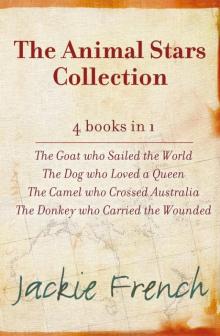 The Animal Stars Collection
The Animal Stars Collection Refuge
Refuge Third Witch
Third Witch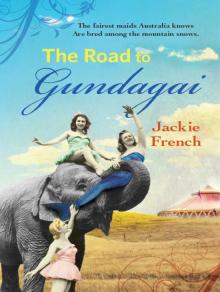 Down the Road to Gundagai
Down the Road to Gundagai